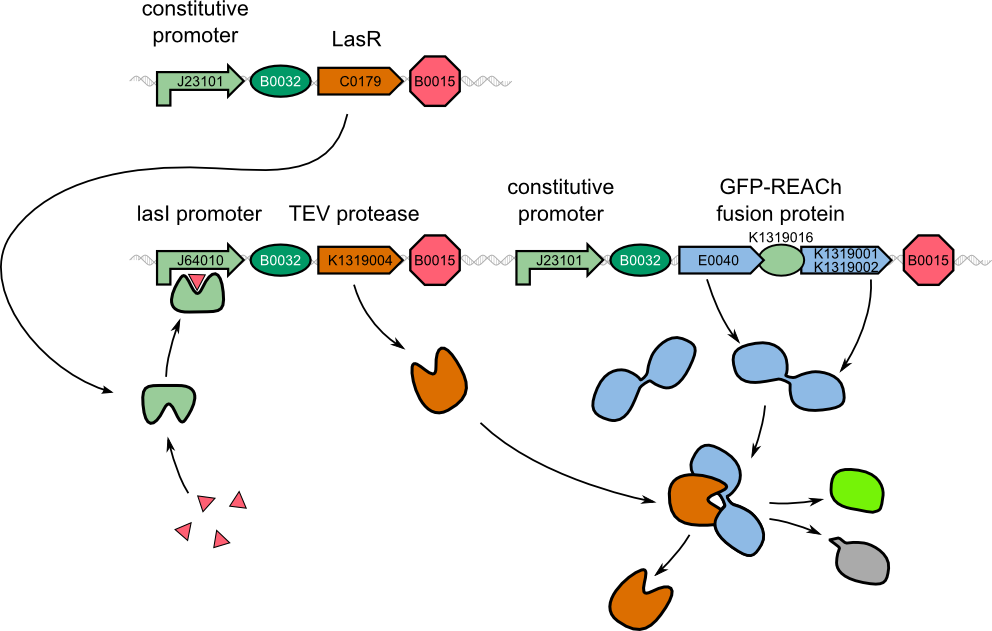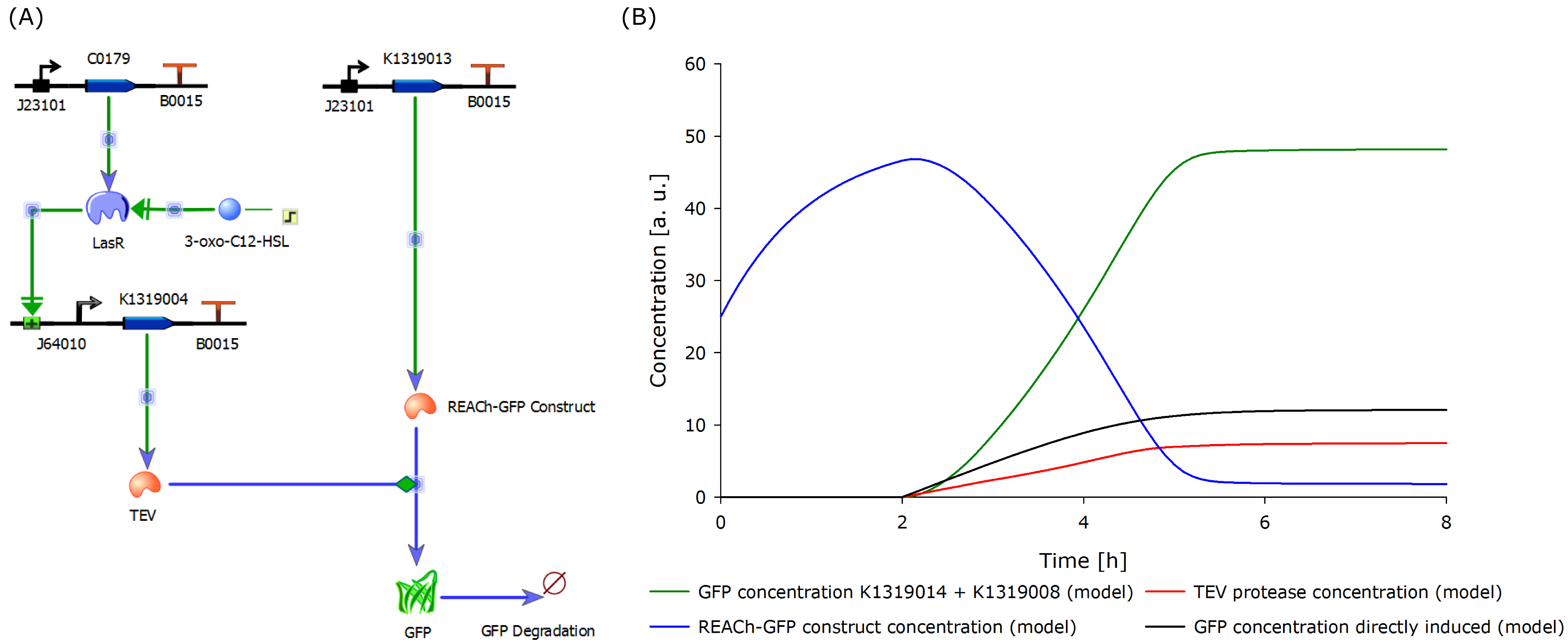Team:Aachen/Project/Model
From 2014.igem.org
(Difference between revisions)
(→Modeling) |
|||
| Line 11: | Line 11: | ||
{{Team:Aachen/Figure|Aachen 14-10-16 REACh approach iFG.png|align=center|title=Our novel biosensor approach|subtitle=Expression of the TEV protease is induced by 3-oxo-C<sub>12</sub>HSL. The protease cleaves the GFP-REACh fusion protein to elicit a fluorescence response.|width=900px}} | {{Team:Aachen/Figure|Aachen 14-10-16 REACh approach iFG.png|align=center|title=Our novel biosensor approach|subtitle=Expression of the TEV protease is induced by 3-oxo-C<sub>12</sub>HSL. The protease cleaves the GFP-REACh fusion protein to elicit a fluorescence response.|width=900px}} | ||
</center> | </center> | ||
| - | |||
<center> | <center> | ||
| Line 18: | Line 17: | ||
The novel biosensor approach was modeled as shown above. The plotted results also include a model of a direct expression of GFP as it appears in traditional biosensors. The strength of the promotor used for the traditional approach is twice as high as the strength of the promotor upstream of the TEV coding sequence in our novel approach. Despite the stronger promotor, a '''higher GFP concentration is generated in the model of the novel biosensor''', proving the stronger and faster fluorescence response of our construct in theory. | The novel biosensor approach was modeled as shown above. The plotted results also include a model of a direct expression of GFP as it appears in traditional biosensors. The strength of the promotor used for the traditional approach is twice as high as the strength of the promotor upstream of the TEV coding sequence in our novel approach. Despite the stronger promotor, a '''higher GFP concentration is generated in the model of the novel biosensor''', proving the stronger and faster fluorescence response of our construct in theory. | ||
| + | |||
| + | Since the final construct could not be built in time, a new model was designed according to the existing and functional double plasmid system. This is inducible with IPTG instead of 3-oxo-C<sub>12</sub>HSL as it contains the lac operon and is therefore a negative regulatory system. | ||
{{Team:Aachen/Footer}} | {{Team:Aachen/Footer}} | ||
Revision as of 00:35, 17 October 2014
 "
"

